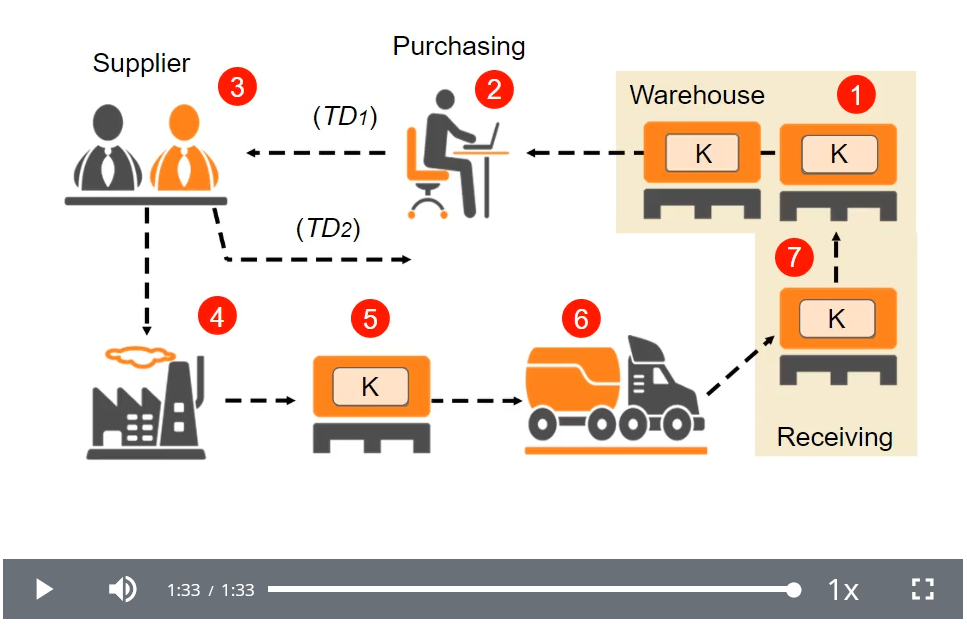The following video provides an illustration of a supplier kanban system. In the scenario, the number of supplier kanbans has already been determined. To make things transparent, there is only one unit of product per pallet to which is attached a kanban card. Without a kanban no product is moved or produced.

Step 1. As the scenario begins, there are two units in stock at the warehouse. At this point, a customer has placed an order for one unit. The product is shipped from stock. The kanban card is removed and sent to the purchasing department.
Step 2. When the kanban card arrives in purchasing, the buyer reviews that card for any possible problems. Once it is approved, it is ready to be conveyed to the authorized supplier. How the kanban is conveyed to the supplier can vary by the nature of the kanban. The decision will impact the duration of the transit delay pickup lead time. For example, in an electronic environment, the buyer could transmit the kanban requirement directly to the supplier through the Internet with the minimal of transit delay. On the other hand, if a container serves as the kanban, the container would have to be conveyed physically to the supplier. Depending on the location of the supplier, this could take several days.
Step 3. Once the kanban reaches the supplier, the requirement is reviewed by the supplier’s customer service staff. Any changes to kanban data is communicated back to the buyer. Transit delay delivery (TD2) indicates how many days it takes for the supplier to return or send a new kanban to the buyer. If the kanban is stocked, we would proceed to step 6.
Step 4. If the kanban must be assembled or product produced, the requirement is passed to the supplier’s production system.
Step 5. As required by the nature of the kanban, the production order is converted to the kanban quantity. For example, if the kanban called for a wire basket supplied by the buyer holding 50 units, the supplier would assemble the kanban and make it ready for shipment. For a stocked kanban, the supplier would create a replenishment kanban for future orders.
Step 6. The kanban order is shipped to the buyer.
Step 7. In this final step, the kanban is received by the buyer and is either moved to a reserve location or directly to the forward stocking location. At this point the kanban replenishment process begins again. Note that the typical accounting transactions performed during standard PO management are eliminated. The kanban processing also will trigger payables and receivables accounting functions.
